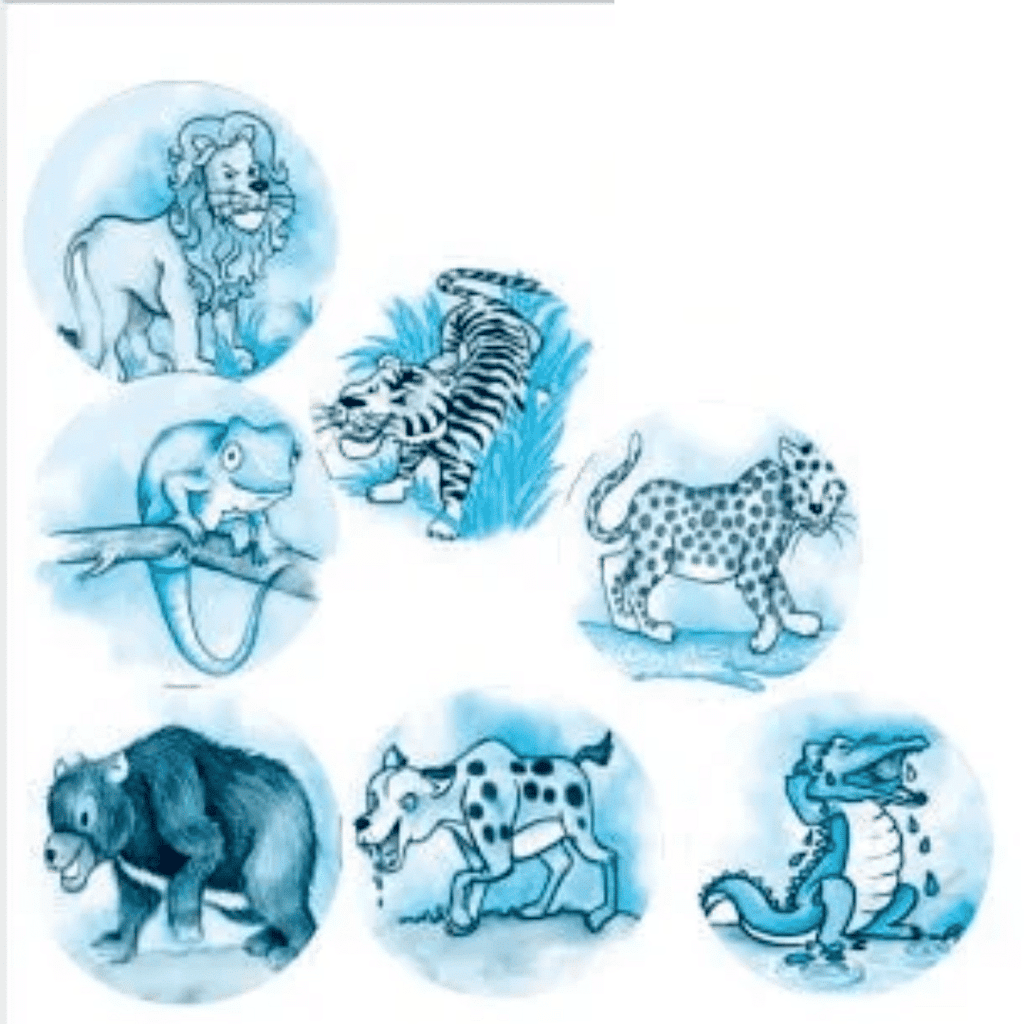How to Tell Wild Animals Summary Class 10 English First Flight Chapter 4
Introduction
The poem "How to Tell Wild Animals" by Carolyn Wells teaches us how to recognize different animals in the wild. Wells vividly describes each animal's characteristics to help us identify them. For example, a Bengal tiger has black stripes on yellow fur, while a leopard has spots and might jump at us. If an animal hugs tightly, it's likely a bear. Beginners can tell crocodiles from hyenas: hyenas smile, but crocodiles appear to have tears. And if there's nothing on a tree, it might be a chameleon.
Summary
The poet describes various wild animals in an engaging and humorous manner, despite their dangerous nature. She begins by introducing the Asian lion, describing its tawny skin and terrifying roar that could induce fear to the point of death. Similarly, she portrays the Bengal tiger as a majestic creature capable of swiftly attacking and devouring its prey, using dark humour to illustrate its deadly nature.
Moving on, she depicts the leopard as an animal with spotted skin that can leap upon its victims in an instant. She humorously suggests that crying out in pain would be futile as the leopard would continue its relentless assault. The poet then introduces the bear, highlighting its ability to fatally hug its victims tightly.

She then poses a question about recognizing predators and explains the distinguishing features of hyenas and crocodiles. Hyenas are characterized by their perpetual smiles, while crocodiles appear to shed tears while hunting.
Lastly, the poet describes the chameleon as a lizard-like creature without ears or wings, emphasizing its unique ability to change color to blend with its surroundings. She humorously suggests that if one sees only a tree without any other visible creatures, it's likely a chameleon camouflaged to match the tree's colour. Through vivid imagery and witty descriptions, the poet effectively conveys the characteristics and behaviours of each wild animal.
Conclusion
The poem offers a unique portrayal of wild animals, likening them to hidden aspects of human nature. Through vivid descriptions and clever analogies, it reveals the hidden characteristics and behaviours of these creatures, shedding light on both the beauty and danger within.FAQs on How to Tell Wild Animals Summary Class 10 English First Flight Chapter 4
| 1. How can we differentiate between different wild animal species? |  |
| 2. What are some common signs to identify wild animals in their natural habitat? |  |
| 3. How can we ensure our safety when encountering wild animals? |  |
| 4. How can we contribute to the conservation of wild animals? |  |
| 5. What are some interesting facts about wild animals that people may not know? |  |















